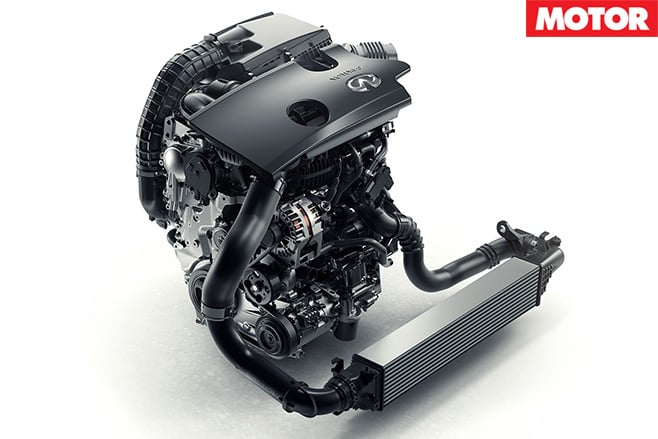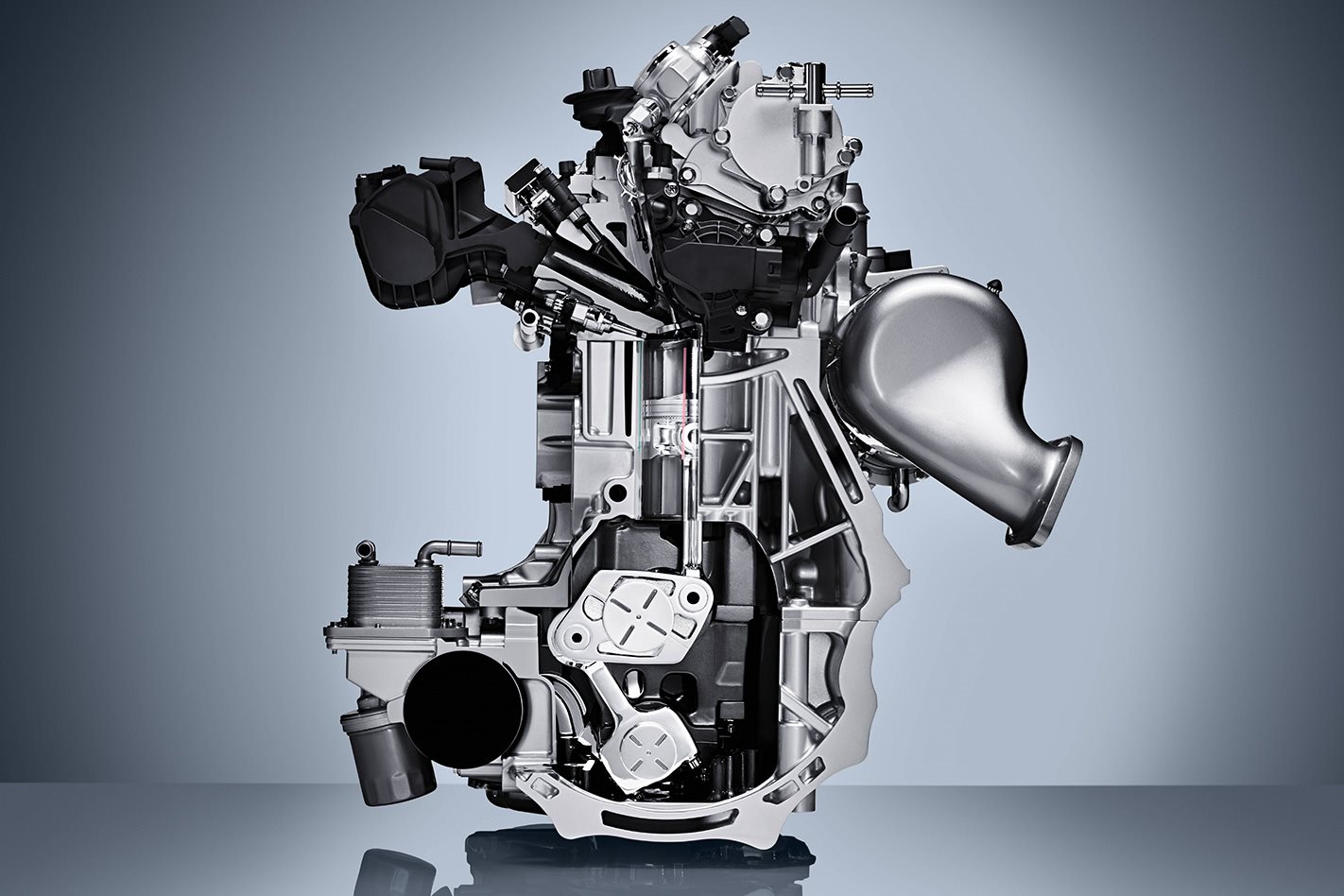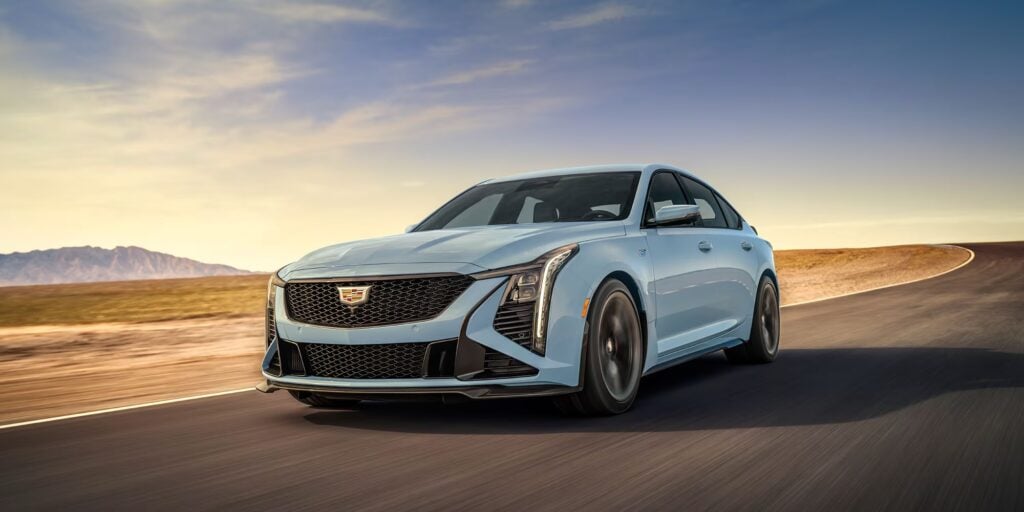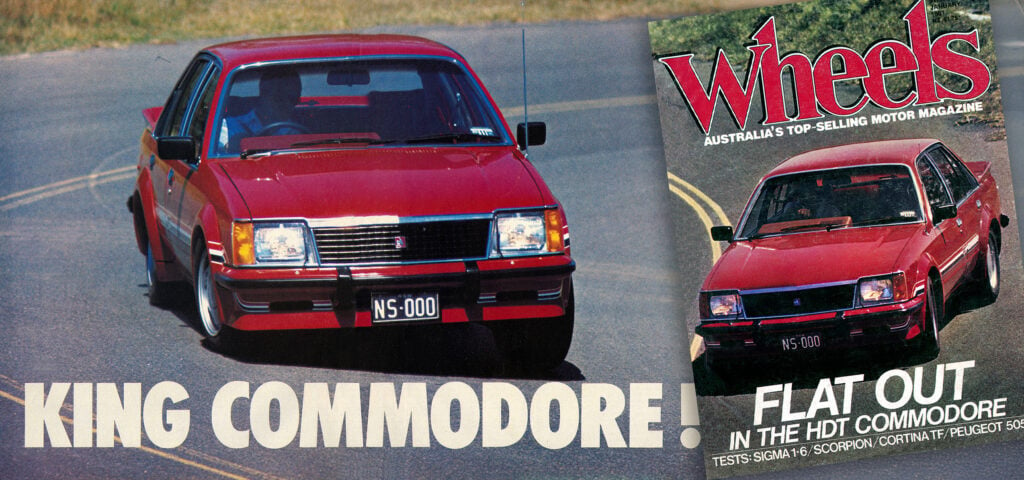Pay attention, kids, because this is going to get a bit complex. It’s taken Nissan and Infiniti the better part of 20 years and 400 patents to get this engine to this production-ready stage, and it’s frankly a bit of a mind-bender.
On the surface, it’s nothing out of the ordinary. An all-alloy inline four-cylinder block and alloy head is bored out to two litres of capacity, and a smallish turbocharger is slung off the exhaust manifold. The clue, though, is in the name. Known as the VC-Turbo, you’re looking at the first production engine in the world with the ability to change its compression ratio on the fly.
Why is that even a thing? Low compression ratios are great for making power – they allow turbos to stuff more air into a cylinder, with more fuel, for more bang, basically – but are lousy for economy. High compression engines – like diesels – are excellent at making the most out of minimal air and fuel, but that compromises its ability to produce power without nasty things like pinging (underfuelling) happening.
Infiniti has basically figured out a way to deliver both, with a compression ratio low of 8:1 and a high of 14:1 (which is a ridiculously big number for a petrol engine). It claims it’s a lot smoother and quieter than a standard turbo four-potter, too.

Infiniti/Nissan sees it not only as a replacement for the VQ six-cylinder family, but it’s also a ploy to add an engine to the range that will achieve ultra-low fuel consumption and emissions figures without the need to add a hybrid electric system to the mix.
STRETCH GAME
How it works
1. QUIET POWER Infiniti is targeting 200kW and 390Nm from the 2.0-litre four-potter. It hasn’t told us what the expected economy will be, but it claims the internal workings are so smooth it’ll knock 20dB off the typical 30dB of noise inside the engine.
2. THE HEART OF THE MATTER The system fits into an area of the engine previously occupied by a pair of balancing shafts. And a lower set of conrods controlled by an actuator arm is key. They’re linked to an upper set via a ‘multi-link’.
3. PUSH AND PULL The actuator arm changes the angle of the lower connecting rods, which alter multi-link angles to restrict or extend piston travel. Plant the foot, the piston doesn’t travel as far up the bore. Go easy, and the piston travels higher, increasing compression.
4. SQUASHY and SQUASHIER The gap at the top of the cylinder head doesn’t appear to change much. Fuel is the constant here – the engine has to combust it at both ends of the ratio scale – so expect to use 98RON as a minimum. Fuel is both direct- and port-injected.
5. CAR PLAY Infiniti says that the VC-Turbo will first be rolled out in 2018 under the bonnet of the (Mercedes-Benz A-Class based) QX30 crossover. And while Nissan’s luxury arm will initially enjoy the fruits of the clever tech, Nissan will adopt it in short order.
Grand Plans
How Nissan will roll-out the VC engine

IN ONE fell swoop, Infiniti and Nissan cracked one of the internal combustion petrol engine’s final codes, and scored a number of goals along the way.
It makes more manufacturing sense, with Nissan admitting the VC-Turbo will be cheaper to build than a diesel. It’s also supposed to be up to 27 per cent more efficient than a 3.5-litre VQ petrol six-potter, all without the complexity and weight of hybrid systems.
Then there’s the fact the VC-Turbo’s more vertical piston arrangement will likely be quieter and smoother than any inline four in the market today.
Nissan will roll out the engine far and wide to amortise 20 years of development costs, and has all but confirmed the VQ six-potter – like the VQ37 in the 370Z – is goneski.
Take the fact the VC motor is just as torquey as a small modern diesel, and it also stacks up as a replacement for oilers across its range.
But a lot has changed for Nissan in 20 years; it now owns both Renault and Mitsubishi, who bring with them considerable EV and hybrid experience, and despite the VC-Turbo’s claimed fuel savings, emissions regs are at levels not imagined when the project kicked off in 1996. Will it be clever enough to survive the new age? Only time will tell. –





